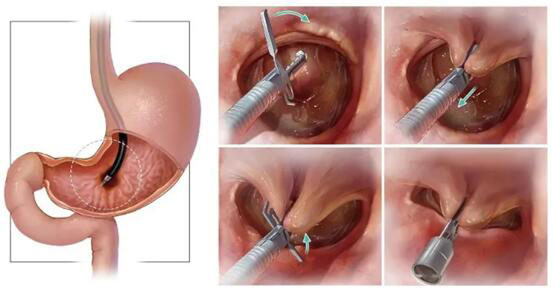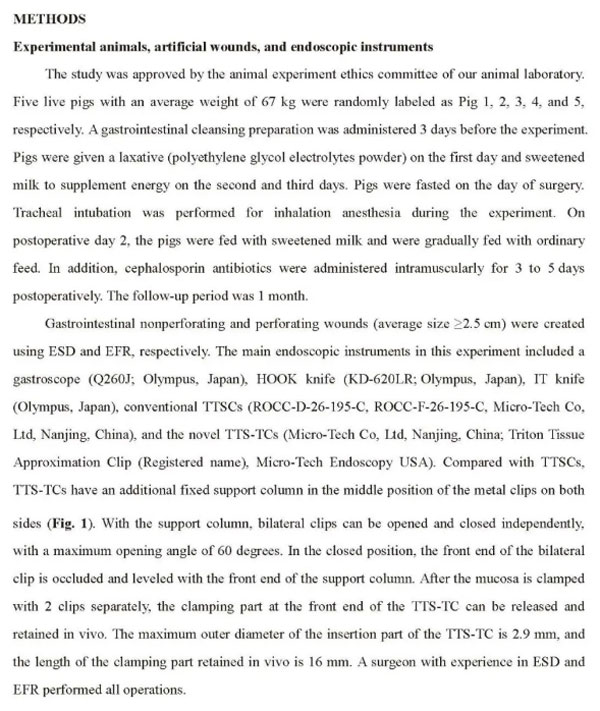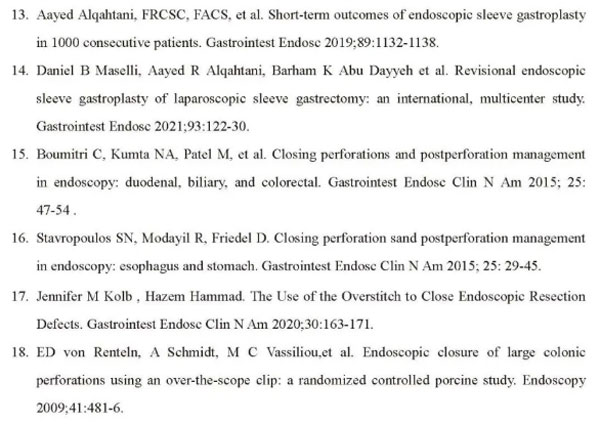On May 6, 2021, Gastrointestinal Endoscopy (GIE), an international authoritative journal in gastrointestinal endoscopy, published a paper titled "One kind of novel through-the-scope twin clip (TTS-TC) for endoscopic wound closure—the first experimental study of survival in live pigs" authored by Zhang Qiang, Nanfang Hospital, Southern Medical University in China.
This Through-the-scope twin clip (TTS-TC), also called "three-arm clip", is jointly developed by Zhang Qiang and Micro-Tech (Nanjing) Co., Ltd. (hereafter referred to as Micro-Tech), featuring innovative "three-arm" structural design. TTS-TC has the following characteristics: 1) being capable of directly operating through the scopic working channel without additional mounting, making the operation fast and efficient; 2) being capable of opening, closing, and revolving repeatedly, making the operation flexible; 3) good holding and closing capabilities, making the operation safe and secure. TTS-TC is mainly applied to closure of gastrointestinal wounds, and, in particular, it is more advantageous in closure of large wounds and any wound at a site where it is difficult to operate. The results of this study in live animal indicate that, endoscopic TTS-TC closure of large-size gastrointestinal wounds has very broad application prospects.

Procedure diagram
Background and Aims: We developed a through-the-scope twin clip (TTS-TC) for closing gastrointestinal wounds. The objective of this study was to evaluate the efficacy and safety of the TTS-TC in gastrointestinal wound closure.
Methods: Gastrointestinal nonperforating and perforating wounds (≥ 2.5 cm) were created in live pigs. TTS-TCs were used to convert the large wounds into small wounds. The remaining small wounds were closed using conventional through-the-scope clips (TTSC). The follow-up period was 1 month. Location and size of the wound, time of wound closure, intraoperative and postoperative adverse events and the conditions of wound healing were investigated.
Results: Thirteen wounds were created in 5 live pigs, including 2 gastric nonperforating and 3 perforating wounds, and 5 large intestinal nonperforating and 3 perforating wounds. The average long and short diameters of the wounds was 4.1 (0.9) cm, 3.4 (0.7) cm, respectively. All wounds were successfully closed using the TTS-TCs combined with TTSCs. The total average time for wound closure was 9.2 (5.3) minutes, and the average time for using the TTS-TCs was 3.9 (4.7) minutes. During the 1-month follow-up period, no bleeding, perforation, or death occurred, all the wounds healed with scar formation, and all the TTS-TCs detached spontaneously.
Conclusion: The TTS-TC was successfully used to close large-sized gastrointestinal wounds. The TTS-TC is a promising tool for large-size wound closure under flexible endoscopy.

















